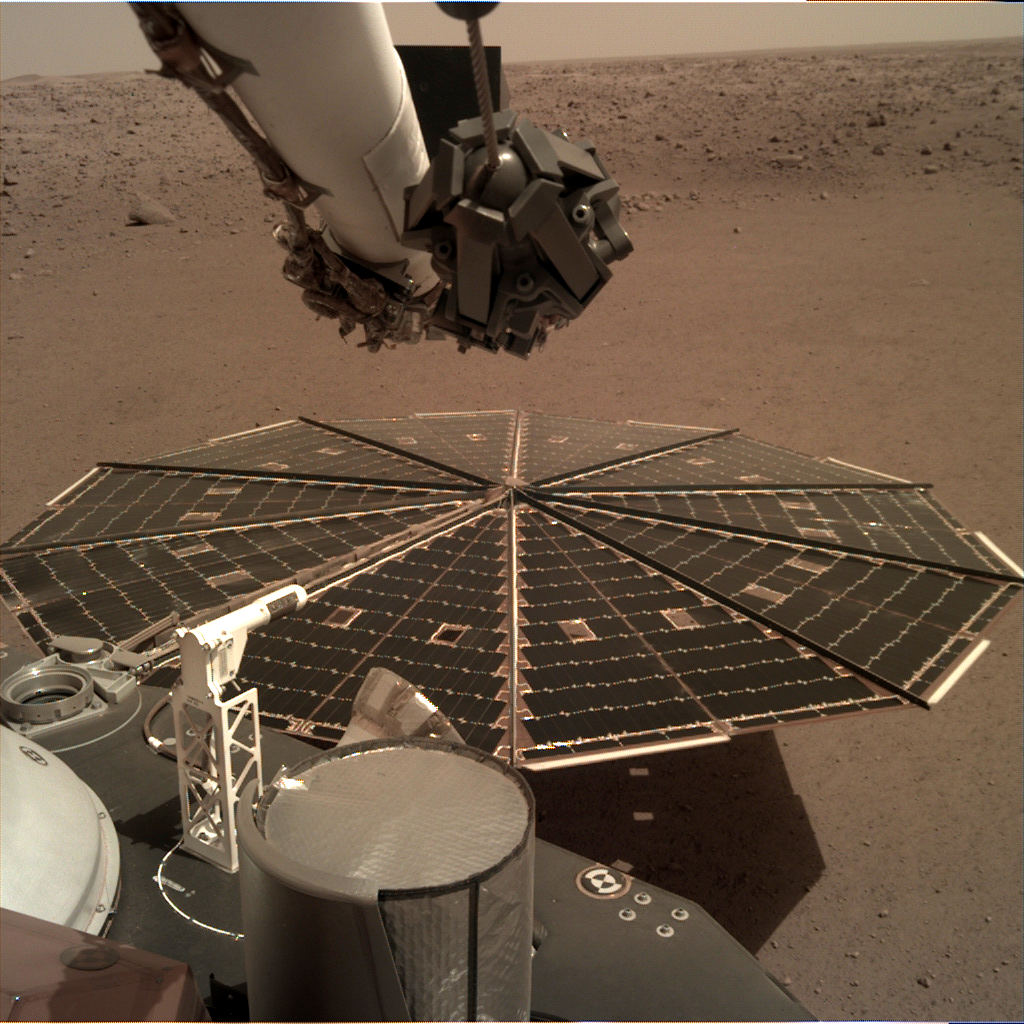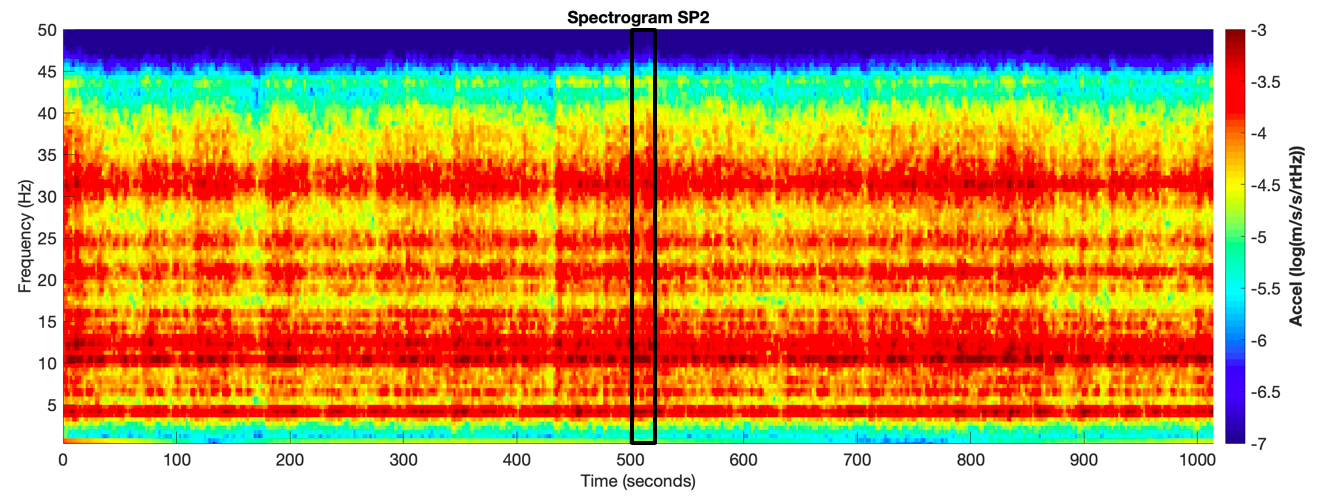NASA's InSight Mars Lander 'Hears' Martian Wind, a Cosmic First
For the first time in history, we can hear the wind on Mars. Well, sort of.
NASA's InSight lander touched down on the Red Planet Nov. 26, and since its arrival, the robot has focused on acclimating to its new environment on Elysium Planitia. And now, the team behind the mission has turned the first bits of that data into an incredible new soundtrack, which you can hear in a new video, released today (Dec. 7).
"This is the first time on the surface of Mars that we've had instruments that can detect up to the frequency that humans can hear," Tom Pike, a scientist on the InSight project who focuses on the sensors, said during a news conference unveiling the recording. [NASA's InSight Mars Lander: Amazing Martian Photos!]

But while the instruments on InSight can capture data in human-friendly frequencies, higher-pitched sounds don't travel well on Mars. So, NASA also provided a version of the recording shifted up in pitch, which pulls some of the otherwise-inaudible infrasound into hearing range.
That's because the instruments weren't shipped all that way to become interplanetary rock stars. Instead, they're specially designed to tackle an important scientific challenge: solving mysteries about the interior of Mars.
To get high-quality data from the incredibly sensitive seismometer onboard the lander, the team needs to be able to cancel out all the commotion coming from the Martian surface, looking only at signals coming from inside the planet. Because wind gusts can trick the seismometer, the lander is equipped with an air pressure sensor to isolate that background noise.
"We're trying to design a noise-cancellation headphone system for our seismometer," InSight principal investigator Bruce Banerdt said.
Breaking space news, the latest updates on rocket launches, skywatching events and more!

But for InSight's first mixtape, none of the lander's instruments have been deployed. The new recording uses data from two sources, the air pressure sensor and the seismometer, which are both still on the instrument deck. That means they are well-placed to capture noises around and onboard the lander, including the sound of the wind blowing across InSight's solar arrays.
"Humans are multisensor people, and now we have two of our sensors turned on with this mission," with both audio and visual data streaming back to Earth, Don Banfield, the science lead for the air pressure sensor, said during the news conference.
The wind you hear in this recording is blowing at between 10 and 15 mph (5 to 7 meters per second) and originates from northwest of the lander, the scientists reported. The sample includes data gathered during the first 15 minutes that the sensors were recording. (Shifting noises to higher frequencies also plays recordings faster, so the clip is essentially a time lapse.)
"To me, the sounds are really unworldly," Banerdt said. "They do sound like the wind or maybe the ocean roaring in the background, but it also has kind of an unworldly feel to it."
But the scientists warned not to get too attached to these recordings, because they won't last long. The team is itching to deploy the seismometer and its protective cover, with the air pressure sensor nestled inside of that shield. When InSight is conducting its science mission, the seismometer won't be able to hear the wind, attuned only to the grumblings of the planet's interior.
The air pressure sensor inside the shield will be relocated as well, and the team will gather data at night, when it expects the wind will have died down and the lander itself will be making less noise. "What you're hearing now should get a lot quieter," Pike said. "It's going to become very difficult to hear the sounds from the outside of Mars later on."
In the meantime, the sounds of the Martian wind are a poignant reminder of just how far InSight has flown: more than 300 million miles (480 million kilometers), becoming only the eighth spacecraft to successfully touch down on the Red Planet.
"It's a really distant rumble that we're hearing," Pike said. "It just gives another way of thinking about how far away [we are when] we're getting these signals."
Email Meghan Bartels at mbartels@space.com or follow her @meghanbartels. Follow us @Spacedotcom and Facebook. Original article on Space.com.
Join our Space Forums to keep talking space on the latest missions, night sky and more! And if you have a news tip, correction or comment, let us know at: community@space.com.

Meghan is a senior writer at Space.com and has more than five years' experience as a science journalist based in New York City. She joined Space.com in July 2018, with previous writing published in outlets including Newsweek and Audubon. Meghan earned an MA in science journalism from New York University and a BA in classics from Georgetown University, and in her free time she enjoys reading and visiting museums. Follow her on Twitter at @meghanbartels.
